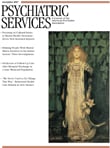Origins of the Quadrant Model for Persons With Co-occurring Disorders
To the Editor: In an article in the July 2007 issue, "Co-occurring Psychiatric and Substance Use Disorders: A Multistate Feasibility Study of the Quadrant Model," McGovern and colleagues (
1 ) noted that the quadrant model has "origins traced to Ries and colleagues and Rosenthal and [is] sometimes referred to as the 'New York' model." I have spoken with Dr. Ries about his important work, and Dr. Rosenthal made an early contribution to the New York model, as noted below. However, the New York model is my work, created with help from colleagues in 1987.
In the fall of 1987 Ken Johnson and David Barry led workshops introducing the New York State Office of Mental Health (NYSOMH)"Mentally Ill Chemical Abuser (MICA) Resource Manual," which they had developed. I was asked to assist in teaching the downstate workshops.
In one workshop, held at World Trade Center Tower 2, my training colleagues and I were faced with militant staff from separate mental health and substance abuse programs, each hurling clinical polemics at their counterparts from the other service system. Ken and Dave supported my idea that trainees were talking about different clients and were defending their turf.
Having recently attended a workshop (on training managers) with multiple two-by-two teaching paradigms, I suggested that we ask the workshop students which quadrant would fit their clients if we set up a high-high, high-low, low-high, and low-low model of mental illness by substance abuse severity. We made up the first model on scrap paper over lunch, tested it on cases we knew, and then drew it on newsprint as we explained it to the students.Workshop students from the different agencies used the model as a shared reference to communicate—albeit, at first, to assert the validity of their comments about their clients.
After the NYSOMH Mentally Ill Chemical Abusers Planning Committee, chaired by Carolyn Plimley, reviewed the model, they sponsored a two-day statewide workshop in the fall of 1989 (which I chaired) to explore its use, and the de facto "New York model" came to pass.The model, the Dual Diagnosis Program Planning Grid, was presented at the directors' conference of NYSOMH in the fall of 1990. It was initially called the Mentally Ill Chemical Abuser Diagnostic Grid, but Richard Rosenthal noted the risk of implying over-simplified diagnosis with broad-stroke categories. James L. Stone, who in 1995 became commissioner of NYSOMH, attended the 1990 directors' conference and in 1998 brought the New York model to a national conference of state directors of mental health and substance abuse services, who then used the New York model to create a grid using domains of service and illness severity, the Quad IV.
The New York model, now called the Co-occurring Disorders Program Planning Model (
2 ) with added dimensions (trauma symptom severity, level of function, time, and risk), is used as a teaching and communication tool to enable diverse clinicians to interact regarding individual clients. This clinical case and program design focus differs from the fiscal, policy, service system responsibility, and purview concerns addressed by Quad IV.

